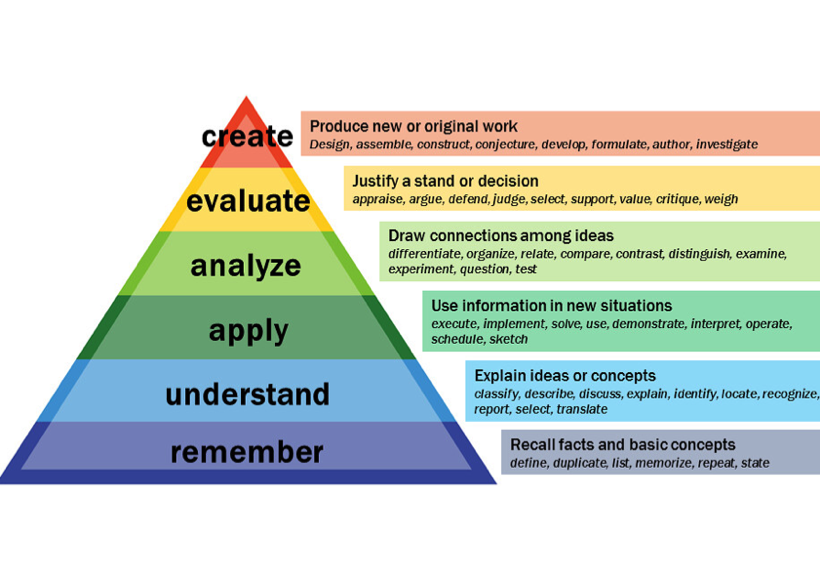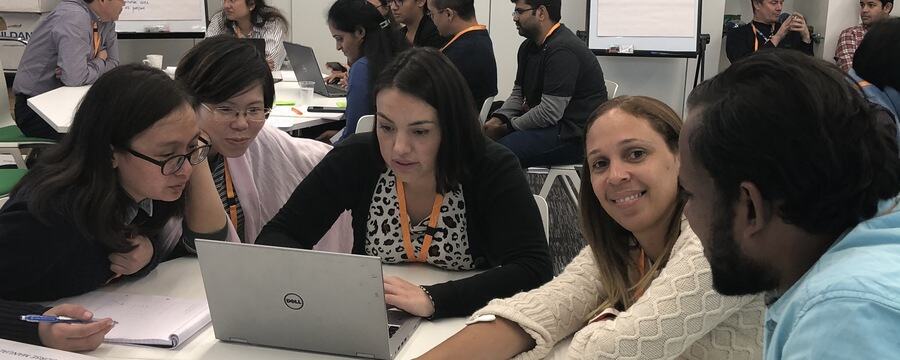Writing Learning Outcomes

Share this step
Learning outcomes are statements of what a learner is expected to know and be able to demonstrate at the end of a learning experience.
Mahajan and Singh (2017), in a paper linked from the See Also section, describe learning outcomes as navigation tools so that once they are defined, the direction of learning and intended outcomes of destination such as achieving specific levels of knowledge or skill sets are achieved. In genomics training learning outcomes can be based on 4 domains:
- Knowledge and understanding of the subject topics, facts and descriptions.
- Cognitive and intellectual skills, applying knowledge to action and problem solving
- Practical skills e.g. designing and carrying out experiments; analysing genomics data for specific health applications
- Professional skills and behaviours, including ethics.
Importance and benefits of learning outcomes
Learning outcomes are often linked to mapped competencies. This will be covered in more details in Week 2 Step2.7. Based on the learning outcomes, the description of the teaching context and the design of learning activities, delivery and assessment plans need to be aligned for effective learning. Some benefits of defining learning outcomes include:
- Clear understanding of what knowledge and skills learners will gain from the training
- Learners understand what they need to demonstrate to achieve the competencies expected for their profession where it is relevant
- Provides a guide to learners and for their preparation
- Helps to provide a plan for training, what and how much to teach and design of effective learning activities and teaching strategies
- Provides a framework for the assessment
- Learning outcomes are useful for measuring effectiveness of training through feedback evaluation
- Important for the evaluation of training programme
- Defined learning outcomes are useful for accreditation purposes
Bloom’s taxonomy
Defining learning outcomes requires clear articulation of the expectations of levels of knowledge and skills, and their applications. When you are thinking about what your students will be able to demonstrate, it can be helpful to classify what kind of knowledge or skills are involved. In an earlier step, Step 1.8, we explained how to use Bloom’s taxonomy to classify tasks according to cognitive complexity.
This is summarised as below:
- Before understanding the concept, remembering it well,
- Understand it before you apply it,
- Analyse the process before you evaluate it.
Formulating learning outcomes
Learning Outcomes, like any other objective, need to be SMART: Specific, Measurable, Achievable, Realistic and Time-bound. In this case, the time is already defined as the duration of the learning, and whether the outcomes are achievable will depend on what resources are available. Specific and Measurable outcomes in the context of education mean outcomes that learners can demonstrate, and you can measure, using the assessment tools you have available.
Examples of LOs
Learning Outcomes (LOs) describe what course participants should be able to do or demonstrate by the end of the course. For example:
By the end of the course participants will be able to:
- Critically evaluate a range of up-to-date genomic technologies and platforms used to sequence targeted parts of the genome or whole genomes
- Discuss approaches to the bioinformatics analysis and interpretation of genomic data
Identifying LOs
When identifying LOs consider what knowledge, understanding and skills you intend participants to learn through the course. The following questions may help with this:
- What do you want participants to know and be able to do by the end of the course?
- How will participants be able to use their learning? Doing what? What contexts?
- What will participants need to do in order to demonstrate if / how well they have achieved these outcomes? What tasks will elicit these specific actions or behaviours?
If participants are asked ‘what did you learn during this course?’ how would you like them to answer?
Writing LOs
It is helpful to express LOs using an active verb (what participants will be able to do) + object + qualifying phrase to provide a context. Using an active verb will help with the assessment planning, as demonstrating something that is concrete (i.e. described with an active verb) is easier to design. You can use the verbs provided in Bloom’s Taxonomy to apply appropriate vocabulary for articulating outcome levels. For example, the statements below can be broken down as shown.
By the end of the course, learners will be able to:
- Critically evaluate (verb) a range of up-to-date genomic technologies and platforms (object) used to sequence targeted parts of the genome or whole genomes (qualifying phrase)
- Synthesise (verb) information obtained from whole genome analysis with patient information (object) to determine diagnosis, penetrance or prognosis for a number of common and rare diseases (qualifying phrase)
Avoid use of vague verbs such as ‘understand’ or ‘appreciate’ or ‘be familiar with’ instead ask yourself what the course participants will be able to do if they understand the topic, and try to express this in the learning outcome. Consider what you will be measuring and assessing; ‘understand’ has a wide range of meanings.
Demonstrating acquired knowledge, skills and attitudes, means showing/doing something. For example, “Genome-Wide Association Studies” is not a Learning Outcome, though it may be a topic covered by your course. Simply changing it to “Learn about GWAS” does not make it a Learning Outcome, because learning about the topic is what the students do during the course, not what they are able to demonstrate after completing it. Changing it to “Understand GWAS” is also unlikely to be helpful, as you need to decide what a learner who understands GWAS would be able to do. Perhaps they could explain the topic, or they could interpret a GWAS study, or they could carry out a GWAS analysis or some element of it, depending on the level of your course.
Task 1
The following are some LOs for a next generation sequencing (NGS) bioinformatics course. Pick 1-2 which could be improved in your opinion:
- Be familiar with the unix command-line as a tool for data analysis
- Perform read alignment, variant calling and structural variation detection using standard tools
- Understand RNA-Seq and CHiP-seq data
- Perform a genome assembly using NGS data
- Describe the different data types available in public sequence repositories and how they are organised.
Task 2
Think about some learning you have taken part in, either as a learner or as an instructor. If you were writing a Learning Outcome for that activity, how would you phrase it? Where does it fit in Bloom’s taxonomy?
If you already have an idea for the course design you will submit for peer review in Week 3, you could also start drafting Learning Outcomes for that. Share your suggested Learning Outcome in the discussion section. Have a look at other learners’ suggestions and offer some feedback if you can see a way to improve the Learning Outcome.
Summary of relevant question when writing LOs
- Does the Learning Outcome describe what learners will be able to do after completing the learning?
- Does the action verb connect to an appropriate level of learning?
- Is the verb something that can be meaningfully demonstrated (not a vague concept like “understand”)?
- Is the Learning Objective SMART (especially specific and measurable through assessment)?
- Is the Learning Objective formulated to be concise, direct, clearly stated and understandable by multiple audiences?
Share this
Train the Trainer: Design Genomics and Bioinformatics Training

Train the Trainer: Design Genomics and Bioinformatics Training


Reach your personal and professional goals
Unlock access to hundreds of expert online courses and degrees from top universities and educators to gain accredited qualifications and professional CV-building certificates.
Join over 18 million learners to launch, switch or build upon your career, all at your own pace, across a wide range of topic areas.
Register to receive updates
-
Create an account to receive our newsletter, course recommendations and promotions.
Register for free







